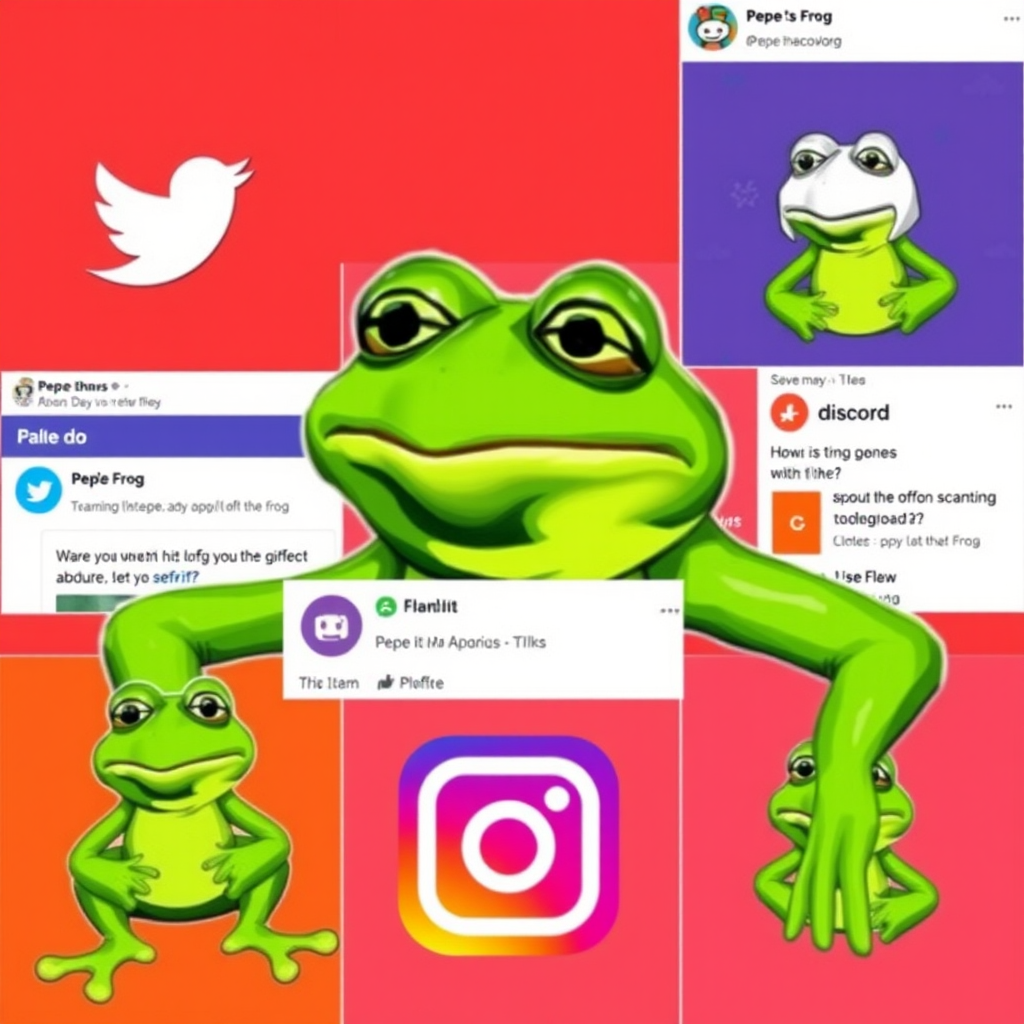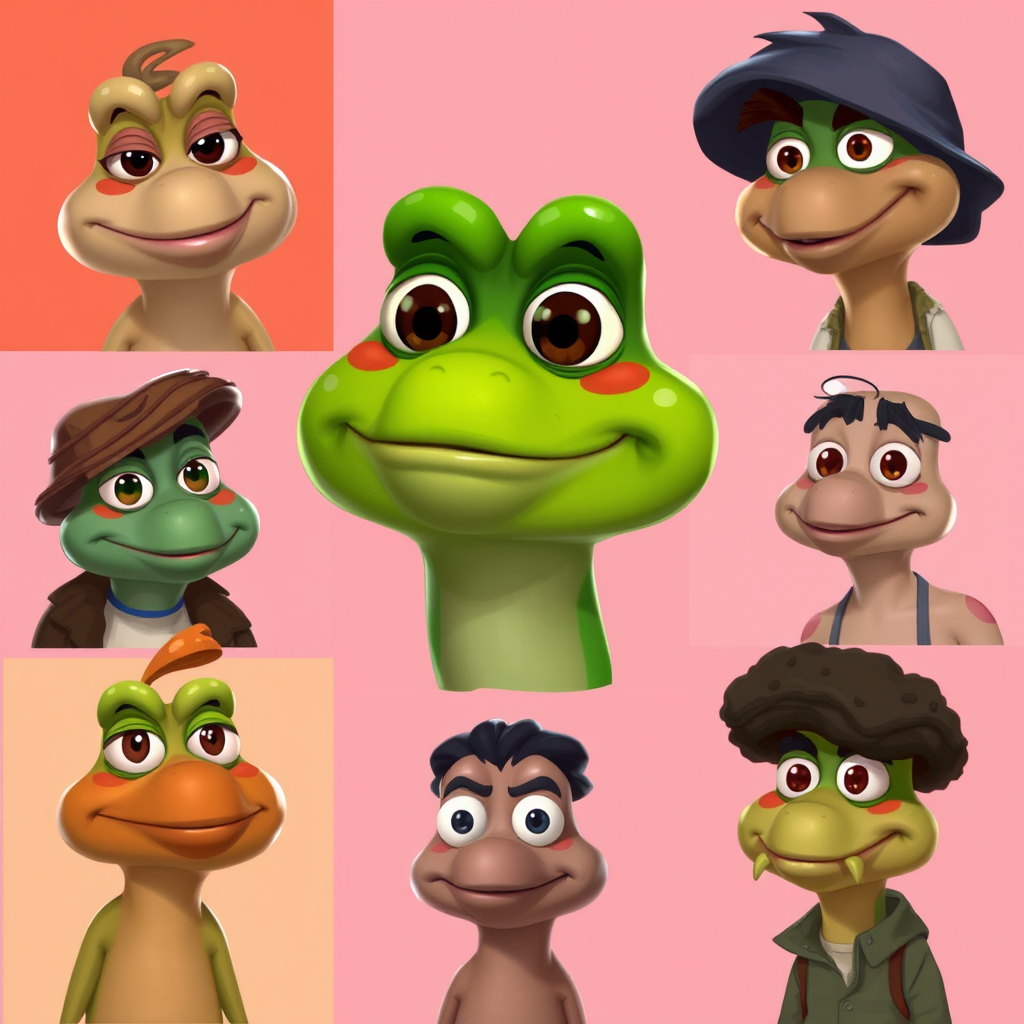Pepe's Cultural Impact: How a Frog Became a Symbol of Internet Expression

In the vast landscape of internet culture, few symbols have achieved the universal recognition and emotional resonance of Pepe the Frog. What began as a simple cartoon character in Matt Furie's "Boys Club" comic has evolved into something far more significant: a digital lingua franca that transcends language barriers and cultural boundaries.
The Universal Language of Digital Expression
Pepe's transformation from comic character to cultural phenomenon represents one of the most fascinating examples of how internet culture art can evolve organically. The character's simple yet expressive design made him the perfect canvas for emotional expression in the digital age. Unlike traditional emoticons or emojis, Pepe offered something more nuanced – a way to convey complex feelings that words alone couldn't capture.
The genius of Pepe lies in his adaptability. The basic frog template could be modified to express virtually any emotion or situation, making him incredibly versatile for meme creators. This flexibility allowed different online communities to adopt and adapt Pepe for their specific needs, creating countless variations that spoke to their unique experiences and perspectives.

Gaming Culture and Streaming Platforms
Perhaps nowhere has Pepe's influence been more pronounced than in gaming culture. Platforms like Twitch have embraced Pepe-based emotes as essential tools for viewer interaction. The famous "PogChamp" expression, while not directly Pepe-related, paved the way for numerous Pepe variants that became staples of streaming culture.
Gaming communities found in Pepe a perfect mascot for their shared experiences. Whether celebrating victories, commiserating over defeats, or simply expressing the complex emotions that come with competitive gaming, Pepe provided the visual vocabulary that gamers needed. The character became so integral to gaming culture that many streamers and content creators began incorporating Pepe imagery into their branding and merchandise.
"Pepe became the emotional shorthand for an entire generation of internet users who grew up expressing themselves through memes rather than words."
Social Media Dominance
The rise of social media platforms provided Pepe with new venues for cultural expansion. On Twitter, Facebook, Instagram, and countless forums, Pepe memes became a common sight. The character's ability to convey complex emotions in a single image made him perfect for the fast-paced, attention-deficit nature of social media communication.
Different platforms developed their own Pepe subcultures. Reddit communities created elaborate Pepe hierarchies and trading systems, treating rare Pepe images like valuable commodities. Discord servers used custom Pepe emotes to build community identity and inside jokes. Even professional social media managers began incorporating Pepe imagery into brand communications, recognizing his power to connect with younger audiences.

Influence on Meme Evolution
Pepe's success didn't just make him famous – it fundamentally changed how memes work. The concept of taking a base character and creating infinite variations became the template for countless other meme formats. From Wojak to various animal memes, the "Pepe model" of meme creation became the standard approach for internet culture art.
The art community memes that emerged around Pepe also demonstrated how internet culture could foster genuine creativity. Artists began creating elaborate Pepe artwork, from simple MS Paint drawings to sophisticated digital illustrations. This democratization of art creation, where anyone could contribute to the Pepe canon, represented a new form of collaborative creativity unique to the internet age.
The Psychology of Pepe
What makes Pepe so effective as a communication tool goes beyond his visual appeal. Psychologically, the character serves as a form of emotional proxy – users can express feelings through Pepe that they might find difficult to articulate directly. This indirect form of communication became particularly important for younger internet users who grew up in digital environments.
The phenomenon of little pepe variations also speaks to the human need for personalization and identity expression. Users could find or create Pepe images that specifically resonated with their experiences, making the character feel personally meaningful rather than just another generic meme.

Global Reach and Cultural Adaptation
One of the most remarkable aspects of Pepe's cultural impact is his global reach. The character transcended language barriers, appearing in memes across different cultures and languages. Each region adapted Pepe to reflect local humor, concerns, and cultural references, creating a truly international phenomenon.
In Asia, Pepe became integrated into local meme cultures, often combined with regional characters and references. European communities developed their own Pepe traditions, while Latin American users created vibrant Pepe subcultures that reflected their unique perspectives and experiences. This global adaptation demonstrated the universal appeal of visual communication in the digital age.
The Legacy of Digital Expression
Today, Pepe's influence extends far beyond individual memes. The character has become a case study in how internet culture can create shared meaning and community. Academic researchers study Pepe as an example of digital folklore, while marketers analyze his success to understand online communication patterns.
The pepe meme culture that emerged around the character also established new norms for internet creativity and collaboration. The idea that anyone could contribute to a shared cultural phenomenon, regardless of artistic skill or background, became a defining characteristic of internet culture art.
As we look toward the future of digital communication, Pepe's legacy is clear. He didn't just become a popular meme – he fundamentally changed how we express ourselves online. In a world where digital communication increasingly dominates human interaction, Pepe the Frog stands as a testament to the power of simple, adaptable symbols to create meaning, community, and connection across the vast expanse of the internet.
About Pepe World: Our blog explores the fascinating world of memes and internet culture, with a special focus on the phenomenon of Pepe the Frog. From his origins in comic books to his current status as a global cultural icon, we examine how this simple character became one of the most significant symbols of digital expression in internet history.